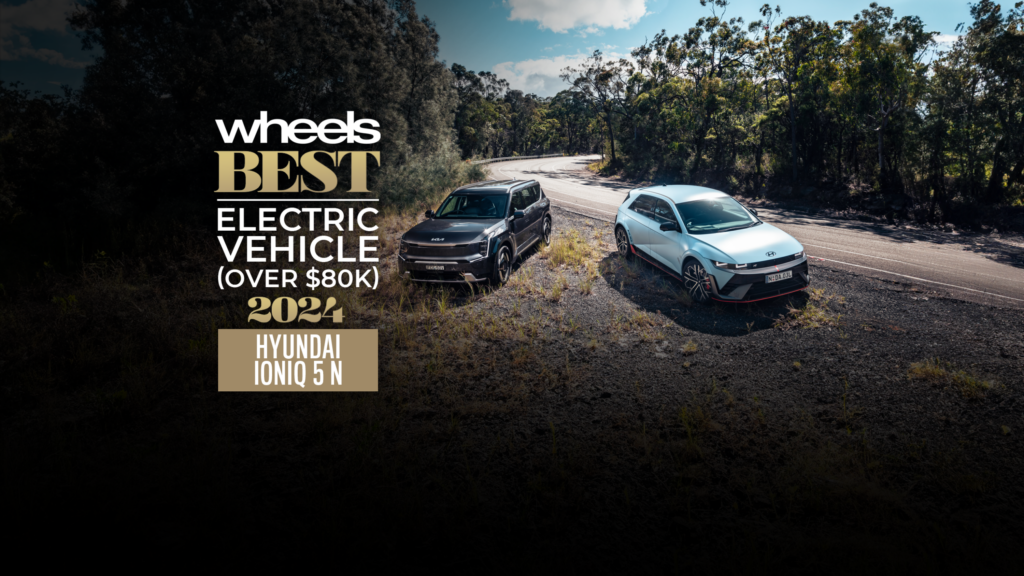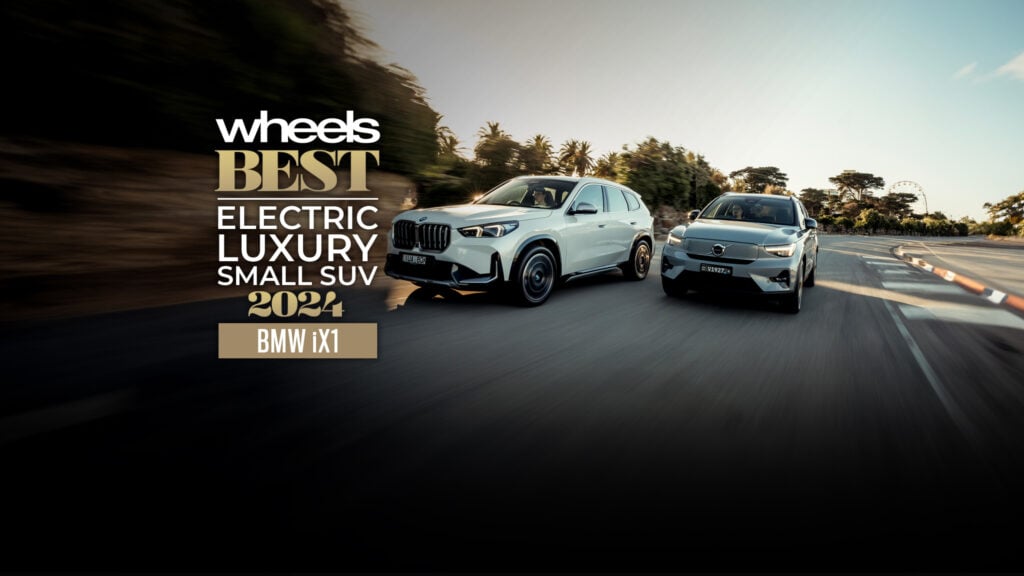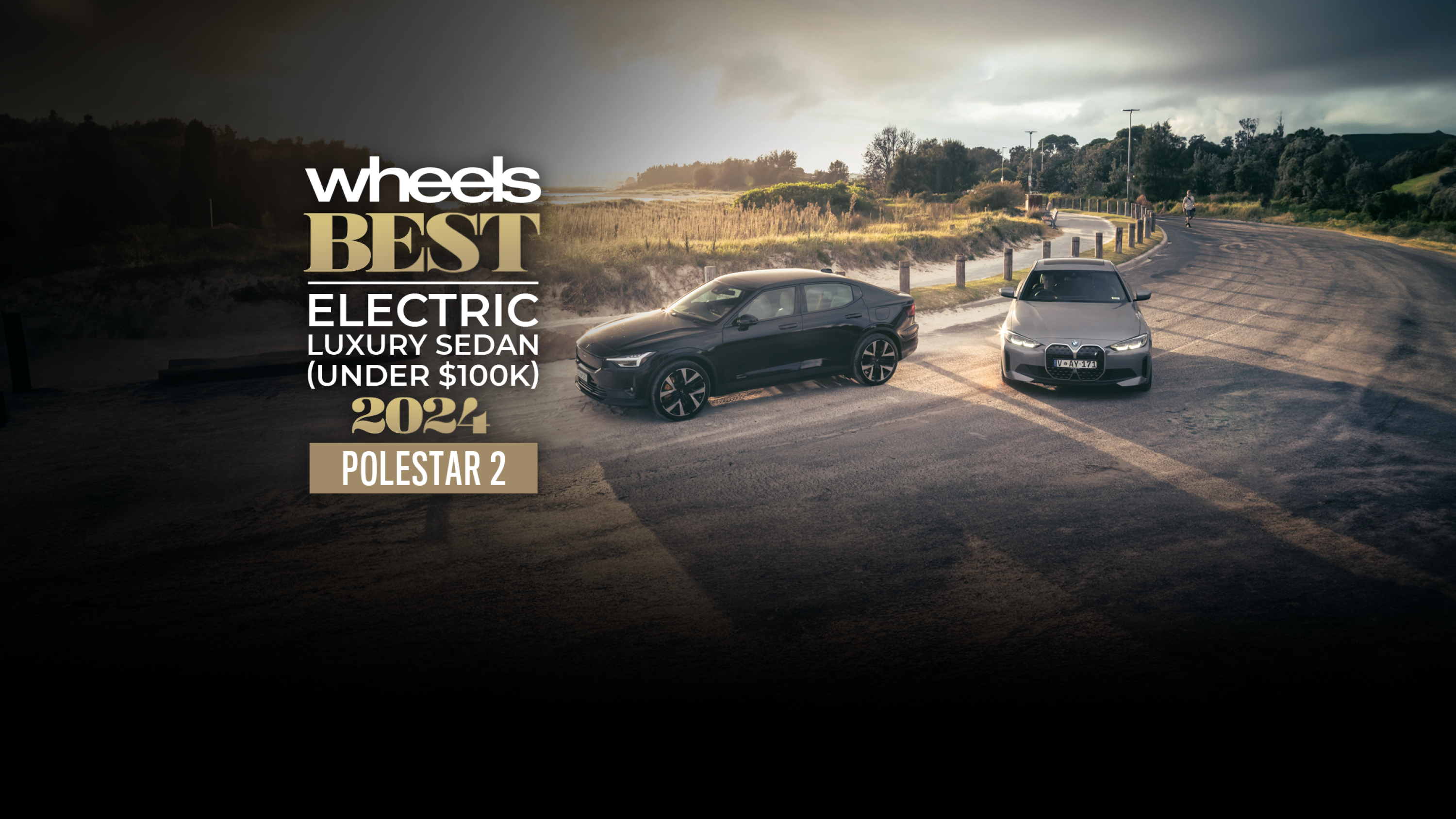
BMW may have defined the sports-sedan class decades ago, but it’s been left chasing Tesla in the electric four-door stakes.
The i4 arrived internationally in 2021, three years after Tesla’s Model 3 single-handedly revived interest in the sedan body style.
It isn’t an all-new, ground-up creation, either, being based on a 3 Series platform – with a 4 Series Gran Coupe body thrown over the top. Aussie imports began in the second half of 2022 with eDrive40 and M50 xDrive models, which both required six-figure payouts from buyers.
That made for good news at the start of this year when BMW Australia added a less powerful but more affordable variant: the eDrive35, priced from $85,900 before added charges.
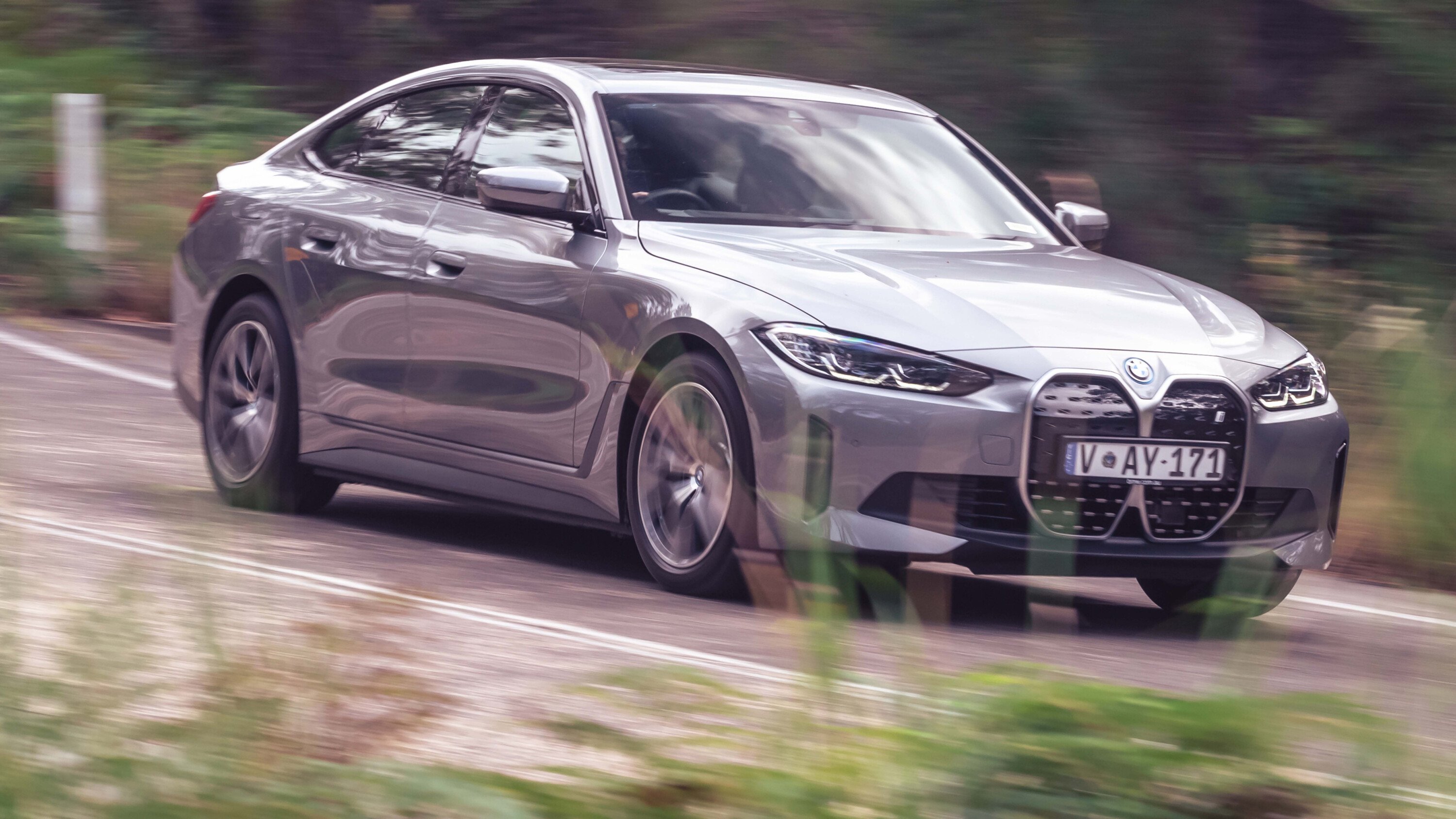
By coincidence, that’s the exact price of the flagship Polestar 2 from the still-young, Tesla-inspired spin-off brand created in 2017 by Volvo and its Chinese owner Geely.
Progress for Polestar has been like a northern-Swedish winter: long, and short on sunny moments. New product – excluding the limited-volume, left-hand-drive Polestar 1 hybrid outlier – has been slow to materialise. Only this year will the 2 finally be joined by Polestar 3 and Polestar 4 SUVs.
Then in early 2024, reportedly due to missed volume targets, Volvo pulled its Polestar funding to leave parent company Geely as sole custodian.
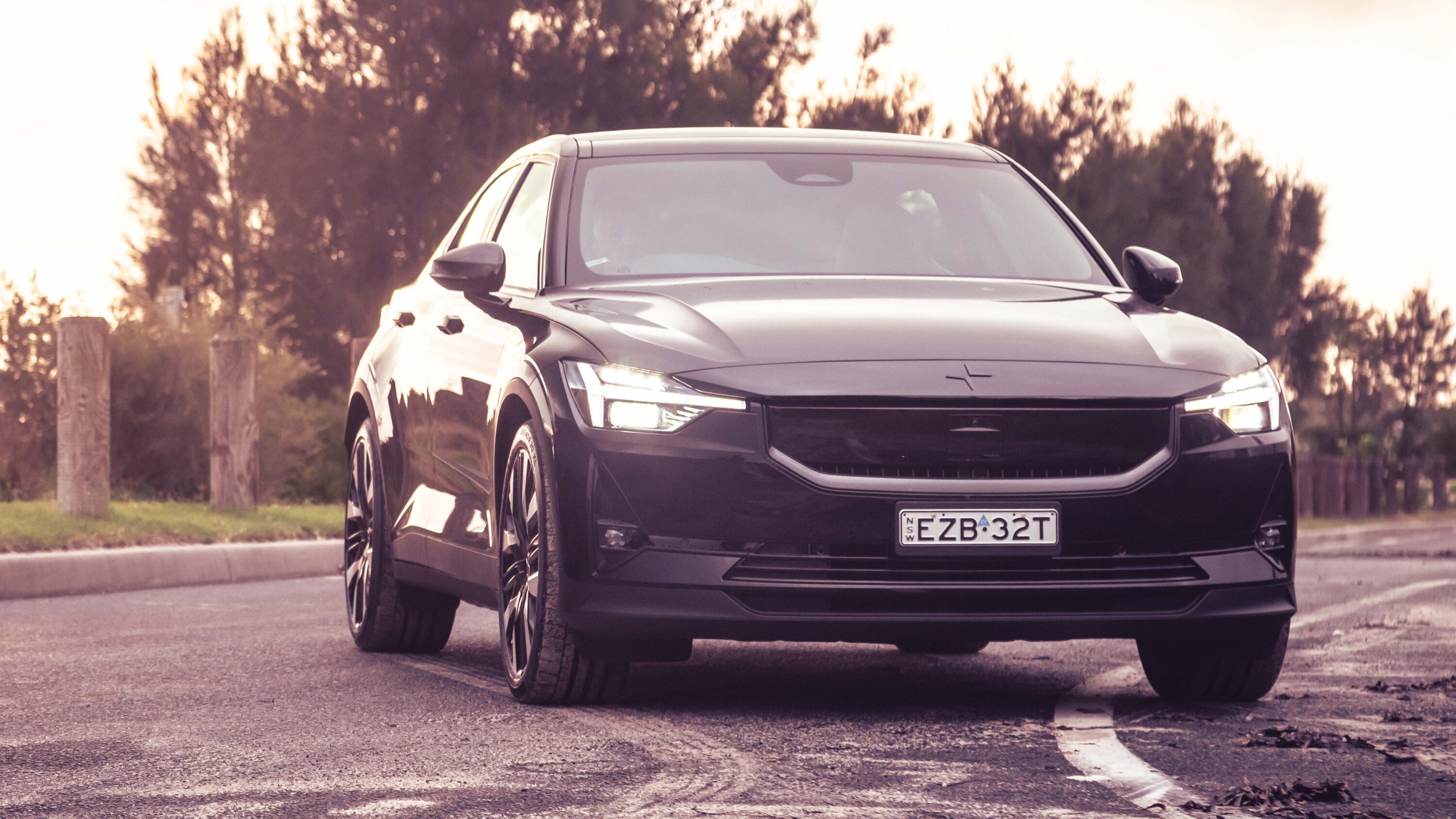
The surprise move certainly wouldn’t have been related to product quality. The Polestar 2 has been a critical success and remains one of our favourite electric cars.
A model year ’24 update in late 2023 introduced some welcome improvements in the areas of battery tech and suspension tuning. Here, we have the Long Range Dual Motor with Performance Pack that sits atop the range.
Costing $9000 more than the AWD Long Range, it adds a 40kW power bump, 20-inch forged alloy wheels, Brembo brakes (in Swedish gold), a sportier chassis, Swedish-gold seatbelts, and Öhlins dampers.
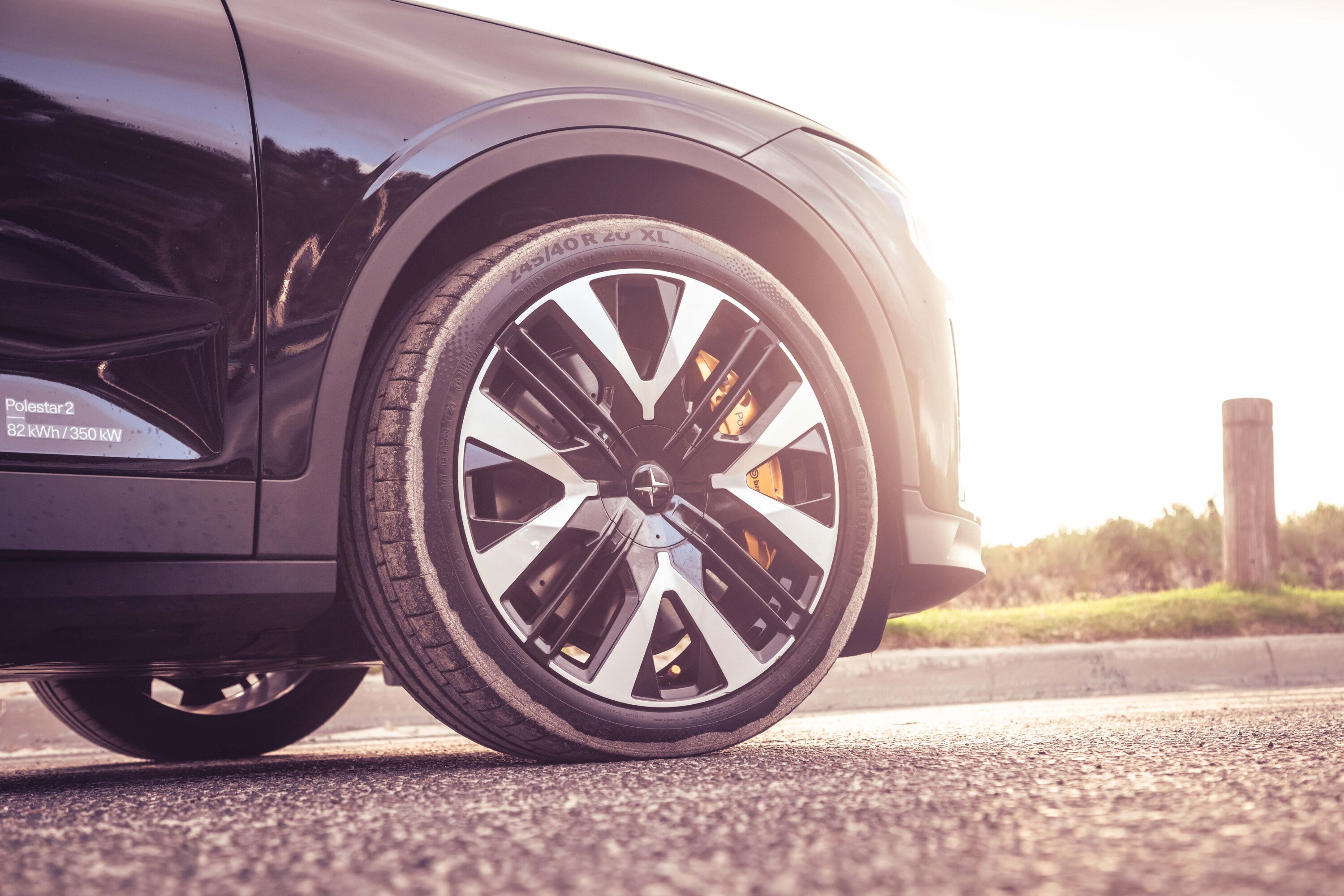
There’s no Model 3 here as the equivalent Performance variant has yet to join the facelifted Model 3 MY24 line-up, while Hyundai’s luxury offshoot Genesis has yet to launch a twin to the Ioniq 6.
Identical price tags here, then, though specifications vary – especially around performance and range. While both liftback sedans eschew dedicated EV platforms, instead integrating battery packs into an ICE-biased chassis, the Polestar 2 Long Range Performance features the biggest cells bundle – 79kWh versus 67kWh (useable). The Swede also features dual motors, providing all-wheel drive with one per axle and outputs of 350kW and 740Nm.
BMW’s rear-drive i4 produces just 210kW and 400Nm in comparison, although that’s still more than the petrol-powered 430i Gran Coupe that costs a bit over $100,000.
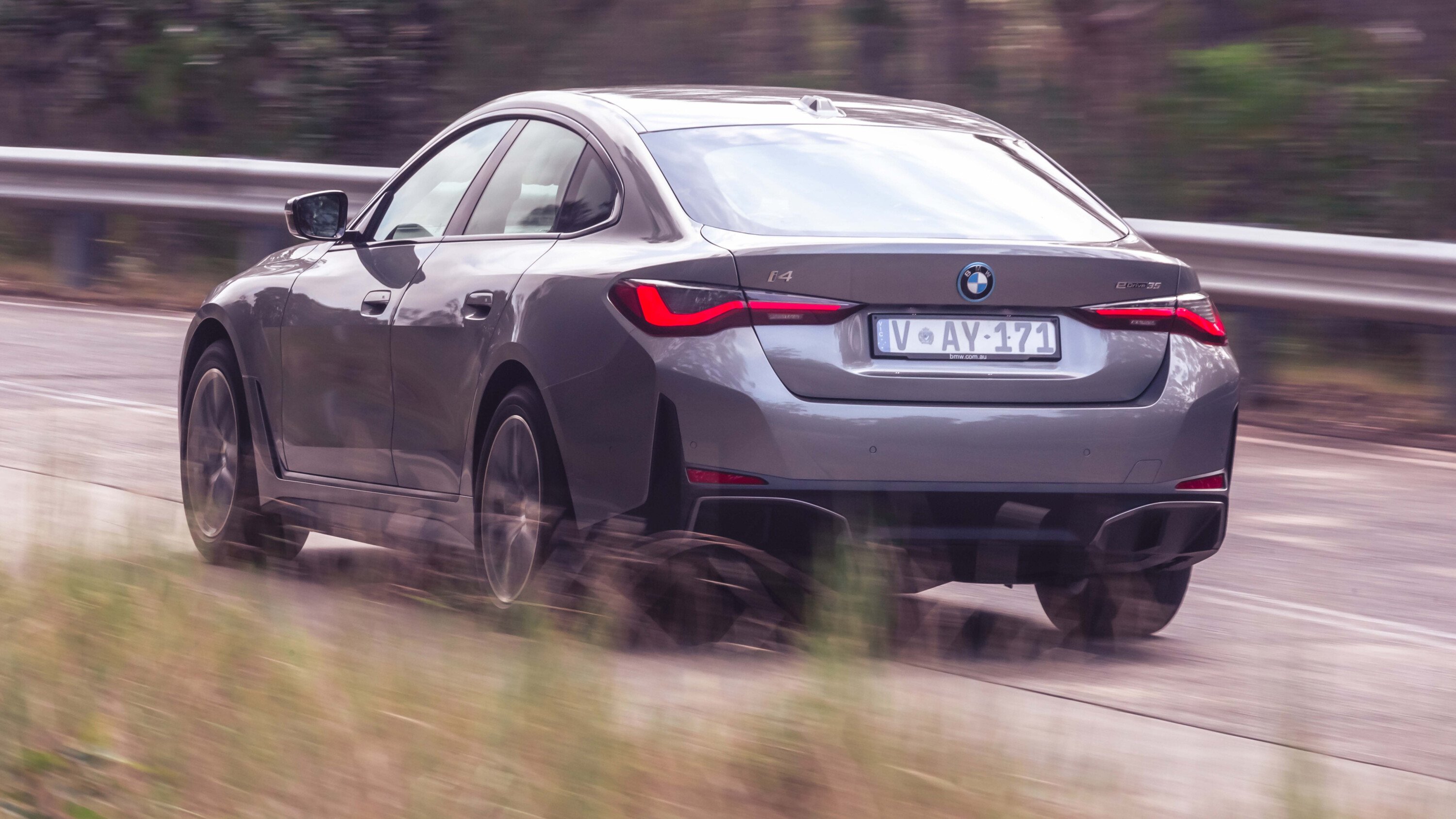
The Polestar can be charged a few minutes faster thanks to more powerful DC charging – 205kW versus 180kW – though both are either side of half-an-hour, which is relatively slow compared with a Hyundai Ioniq 6 that performs the same charge in 18 minutes.
BMW does throw in a one-year complimentary sub to Chargefox, though it’s five years with other i4 grades.
It contributes to a small standard-kit advantage for the base i4. The Polestar can’t match its electric front seats, head-up display, adaptive cruise control, or heat pump that can help improve range in colder weather. A head-up display isn’t even available as an option; other features are, but they’re found in different packs – adaptive cruise as part of a $3500 Pilot Pack and the rest as part of a $6000 Plus Pack.
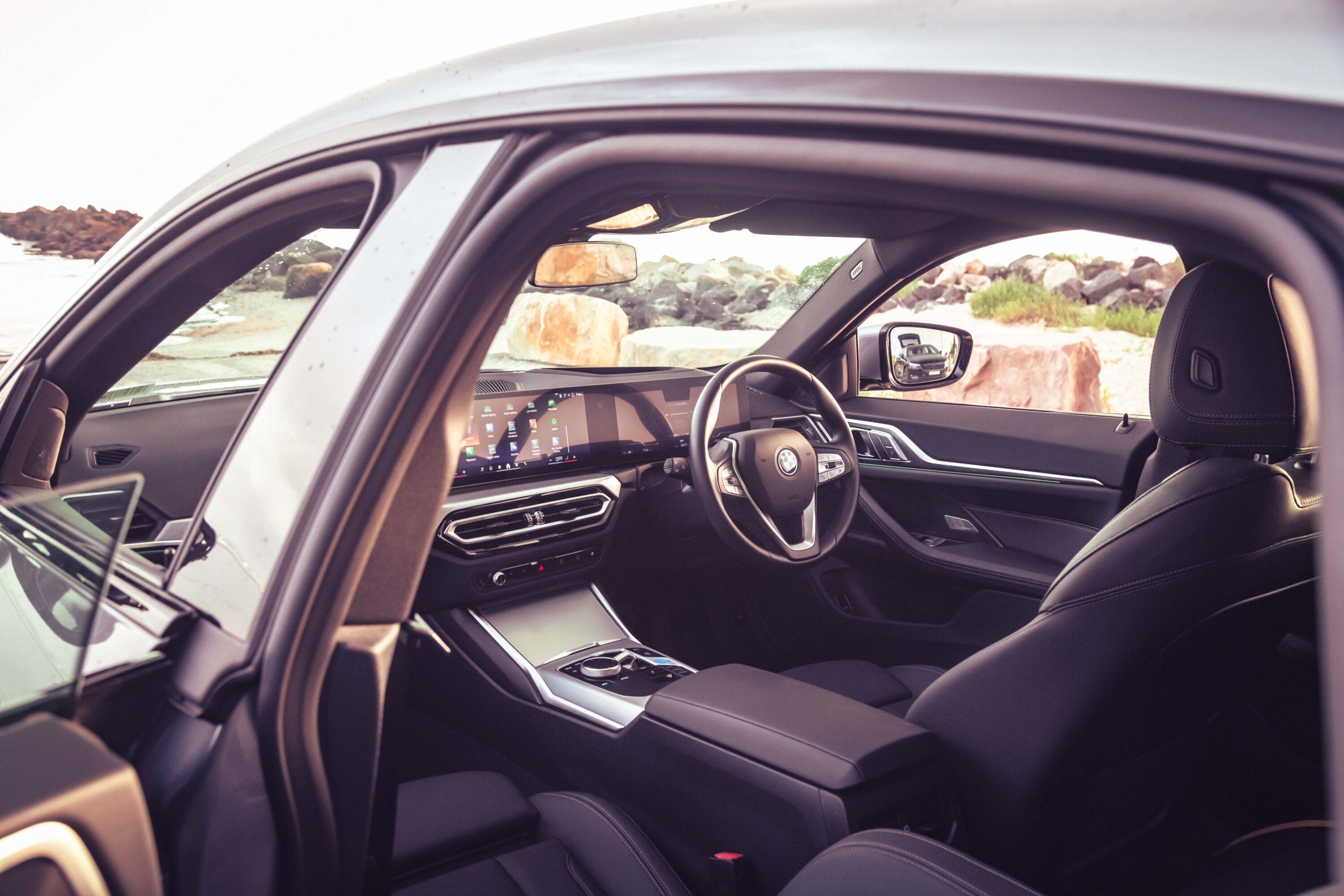
The latter brings numerous other extras, though, including a full-length panoramic roof, 600-watt Harman Kardon audio, Tesla-style Digital Key smartphone app functionality, and heated steering wheel and rear seats.
These complement the standard heated front seats that on the BMW require a $3000 outlay for an Enhancement Pack that also brings a sunroof, which is smaller than the Polestar’s.
Rear seats are probably the most obvious giveaway that both these five-doors are built on mixed-powertrain architectures. The space offered, while not off limits to adults by any means, is less than what is offered by the likes of the Ioniq 6 and Model 3 that utilise skateboard battery platforms.

The i4’s rear cabin is the most claustrophobic, starting with the squeeziest rear-door aperture followed by the least knee room, least forward vision, and least light provided by optional sunroofs.
There’s more wriggle-room for toes in the BMW but similar headroom that is tight for anyone scaling 175cm plus. Armrests, USB-C ports, seatback nets and vents are all commonalities; the BMW provides the larger door pockets.
Neither front cabin fails the luxury brief thanks to high-quality presentations, slick tech, and tactile materials and switchgear. The i4, sharing the 4 Series design, keeps harder plastics to the lowest eye level, while silver patterned metallic trim brought some welcome brightness to our test car’s black interior trim.

BMW’s iDrive rotary controller continues to sit on the centre console as an ergonomic benchmark in infotainment management (while the central part of the dual digital display can also be operated as a touchscreen).
Less successful are the Drive modes that are separate buttons requiring the driver to look down to choose Eco Pro, Comfort or Sport rather than via a more convenient toggle (as they were previously in BMWs).
The Polestar 2’s cabin makes you wonder if Volvo’s interior designers were left with a tinge of regret, especially as the 2 started life as the Volvo Concept 40.2 – alongside the Concept 40.1 that became the XC40. Because where the XC40’s interior is commendable for its clever practicality, the Polestar takes the desirable Scandi-cool aesthetic to a whole new level.
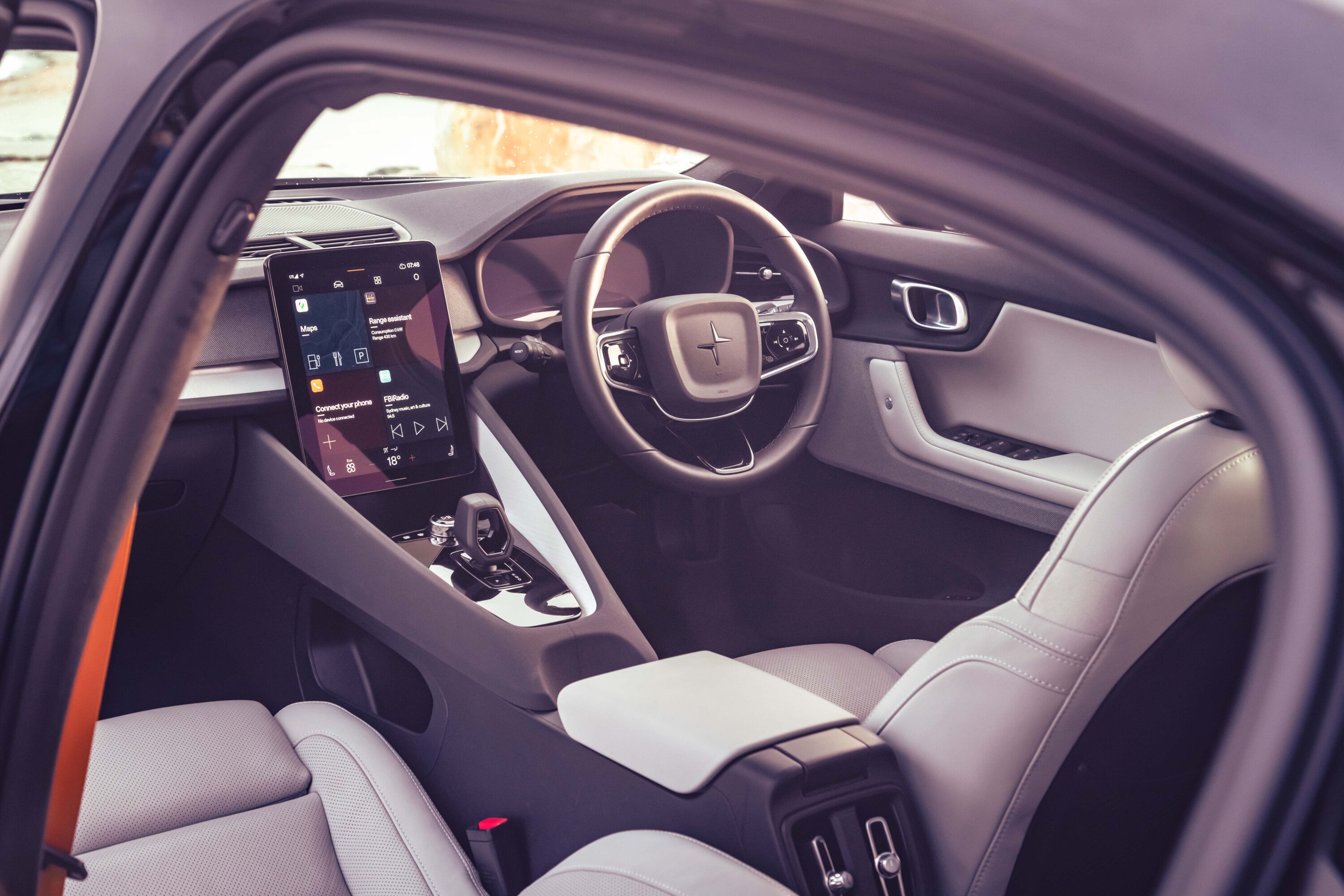
A wondrous mix of different yet consistently tactile materials pervade the cabin, creating one of the standout interior designs in this class.
We know from previous tests that the standard fabric seats look smart, though the Plus Pack’s ‘WeaveTech’ seats – further embellished with the Performance Pack’s Swedish-gold seatbelts – look posher again while offering comfortable cushioning and decent support.
A chunky V-shaped centre console creates a twin-cockpit setup that is snug without being cramped for front occupants, with the centrepiece an iPad Pro-aping 11.2-inch portrait-shaped infotainment screen.
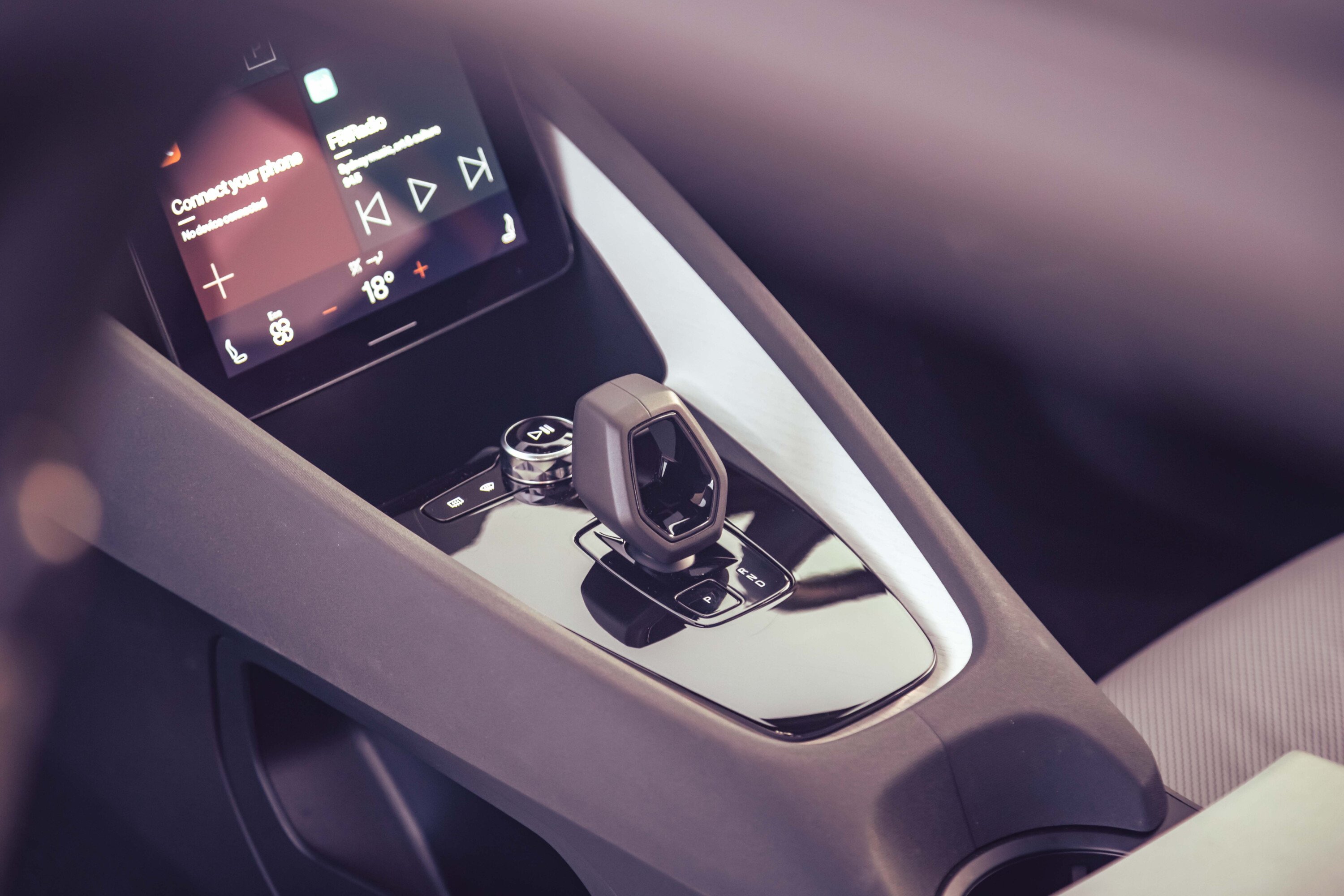
If the built-in Google Android operating system’s graphics aren’t quite as sophisticated as those presented by the wider, larger (14.0-inch) BMW OS 8.5 display, the presentation is still slick and there’s a beauty to the simplicity of the Polestar’s quadrant menu.
Luggage space is ultimately an all-square affair beyond the fact both cars feature liftback hatches that are more practical than bootlids. BMW quotes 470 litres for the i4’s boot, though the Polestar’s compartment is wider (if not quite as long) and features a larger underfloor tub (for a 407L total), while there’s additional storage with a 41L frunk that’s particularly handy for charging cables.
It also borrows the clever cargo divider from the XC40, which flips up from the boot floor and includes storage straps. Rear seats fold flat in both vehicles; the Polestar’s 60-40 set-up includes a ski port, but the BMW offers extra flexibility with its 40-20-40 split.
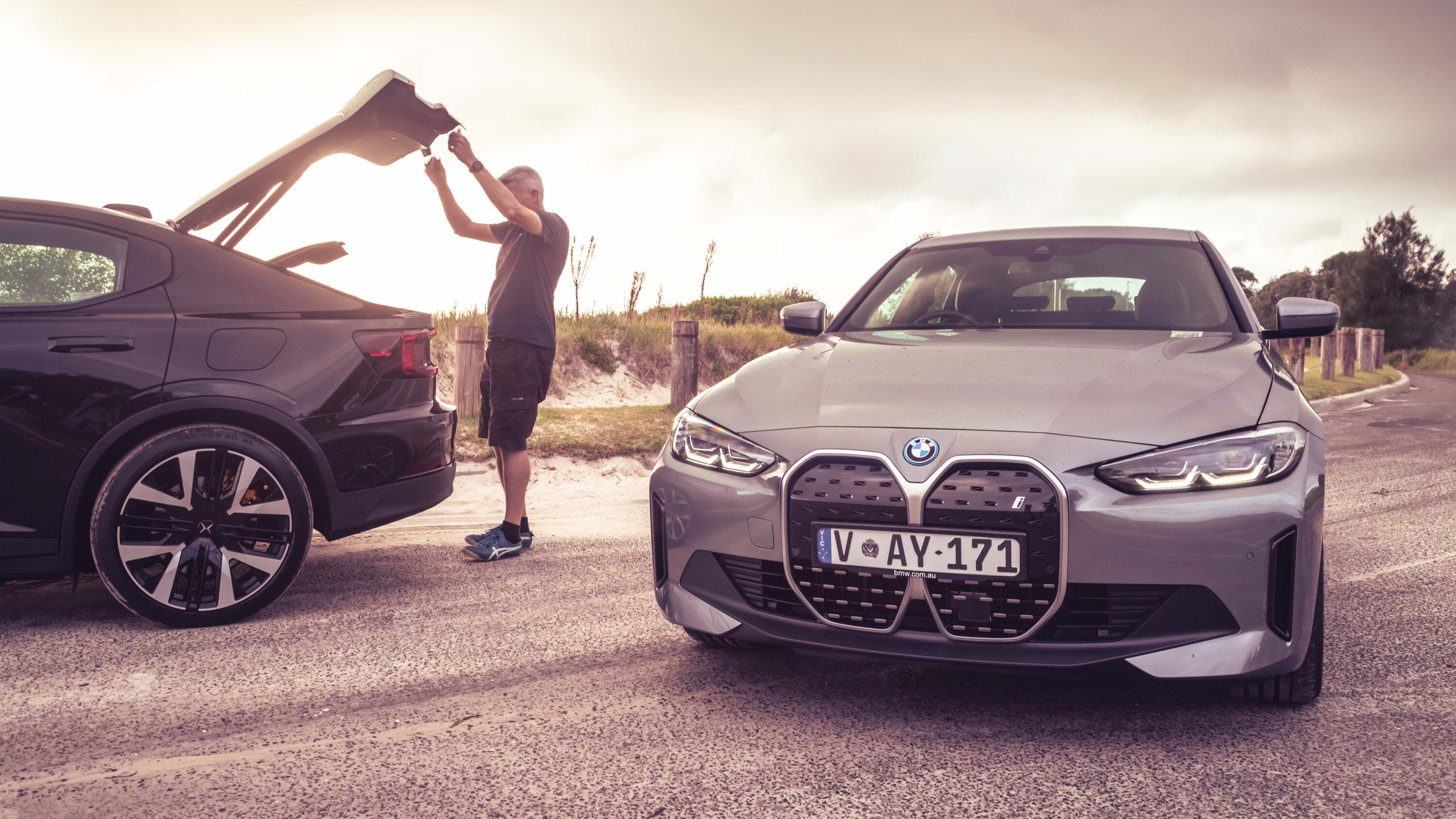
Underpinnings from a 3 Series always brings a certain level of dynamic expectation, and the i4 doesn’t disappoint, despite weighing nearly two tonnes.
Not only is there still a deftness to the electric BMW’s handling, but the immediacy of the torque delivery means it’s easier than in a 420i or 430i to induce some fun, controllable power oversteer mid-corner.
Regardless of driving mode, the steering is lighter than BMW tradition but weights up naturally in corners and offers ever-reliable precision. The eDrive35 doesn’t feel slow, either, even if the top-spec Polestar 2 is inevitably much quicker with its drivetrain advantages. On paper, Sweden’s 4.2 seconds plays Germany’s 6.0 seconds.

The Dual Motor Long Range is more than 100kg heavier and not as playful, yet it still offers plenty for drivers.
Its steering, too, offers accuracy but also a more natural heft, lending the driver plenty of confidence in concert with the planted, all-wheel-drive chassis and the 245/40R20 Continental SportContact 6 rubber that is grippier than the i4 eDrive35’s Pirelli P Zero 18s.
That Performance Pack brings much more than bigger wheels, further adding a sportier Polestar Engineered suspension tune, dual-valve-flow dampers, and four-piston front Brembo brakes. The Öhlins dampers are a carry-over from the Volvo S60/V60 Polestar of a decade or so ago, and continue to offer 22 settings that can be manually adjusted (if the owner can be bothered).
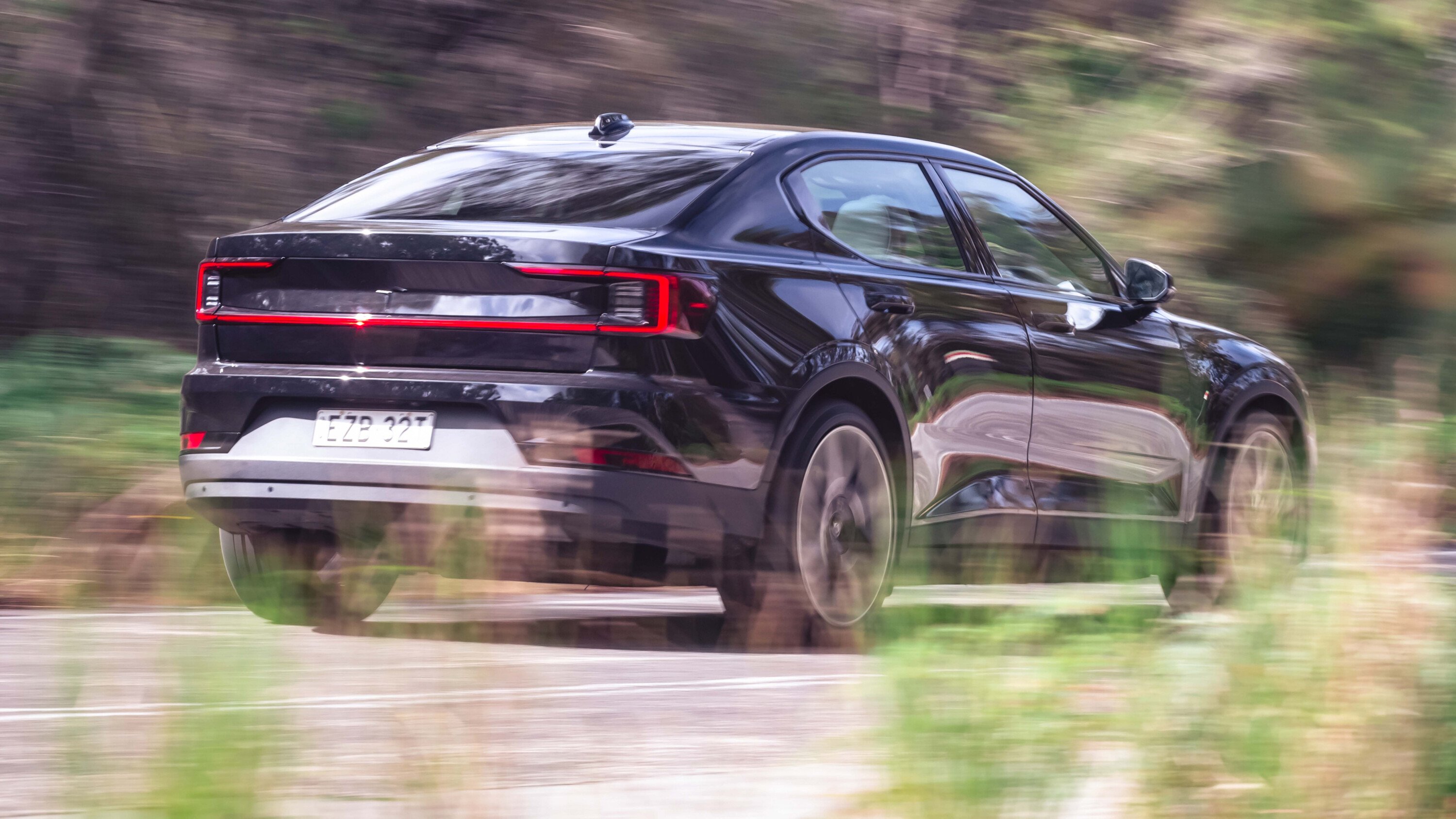
We’d be tempted to ask a Polestar technician to dial in a softer setting than the factory default as the 2 rides with an unrelenting firmness.
It has the better all-round compliance, however, as the i4’s suspension struggles to keep the vehicle body steady over potholes or more prominent surface bumps. The BMW has the more relaxed secondary ride, and its smaller wheels produce noticeably less road noise on coarser surfaces.
The Polestar 2 delivers a closer facsimile of the Tesla driving experience than the i4, with full one-pedal mode and the ability to drive off simply by jumping in and flicking the gearlever into Drive. A start-stop button needs to be pressed in the BMW, while the i4 has various regen braking modes but the deceleration is weak even in the highest setting.

On test, the Polestar 2 registered a so-so 17.9 kilowatt hours consumption compared with an impressively low 15.2kWh/100km for the i4.
In a remarkable coincidence, that gives them an identical 441km as-tested range based on their respective battery sizes. For the BMW, that’s slightly higher than its WLTP range of 430km max; the Polestar is a huge underachiever, well below its 568km WLTP.

As much as we love performance in the Wheels office, the fullest-fat Polestar 2 in this comparison is not the model we’d pick.
Our choice would be the $71,400 Long Range Single Motor that promises the longest range (655km) in the line-up, still has more power and torque than the i4 eDrive35, offers satisfying rear-drive handling, and would still undercut the BMW if buyers spent $9.5K on the Plus and Pilot Packs.
VERDICT: ? Polestar 2
It’s a tighter call between the top-spec Polestar 2 and entry-level BMW i4, but the Swede still edges the contest by virtue of its superior cabin execution, punchier performance, and generally more effortless driving experience.
⚡ 2024 Wheels Best EVs
Looking for an EV in a different size or price category? Visit our full Wheels Best EVs series at the links below.
? Wheels Best EVs
- Best Small Electric Car Under $40K
- Best Small Electric Car $40-50K
- Best Small Electric Car $50-60K
- Best Electric Small SUV
- Best Electric Midsize SUV
- Best Electric Midsize Sedan
? OVERALL WINNER: Best Electric Car Under $80K
PART 2
- Best Electric Large SUV
- Best Electric Small Luxury SUV
- Best Electric Midsize Luxury SUV
- Best Electric Luxury Sedan Under $100K
- Best Electric Luxury Sedan Over $100K
- Best Electric Performance Car
? OVERALL WINNER: Best Electric Car Over $80K
| BMW i4 eDrive35 | Polestar 2 Long Range Dual Motor PP | |
|---|---|---|
| Motors | One u2013 rear-mounted | Two u2013 front- and rear-mounted |
| Battery | 81.5kWh (67kWh useable) | 79kWh (67kWh useable) |
| Power | 210kW | 350kW |
| Torque | 400Nm | 740Nm |
| Transmission | 1-speed reduction gear | 1-speed reduction gear |
| Dimensions | 4783/1852/1448/2856mm | 4606/1859/1473/2735mm |
| Weight | 1990kg | 2150kg |
| 0-100km/h | 6.0sec (claimed) | 4.2sec (claimed) |
| Range | 430km (WLTP), 441km (tested) | 568km (WLTP), 441km (tested) |
| Price | $85,900 | $85,400 |
We recommend
-
 News
News2024 Polestar 2 pricing and features: Rear-drive sedan arrives
The updated Polestar 2 goes rear-wheel drive and adds plenty of range
-
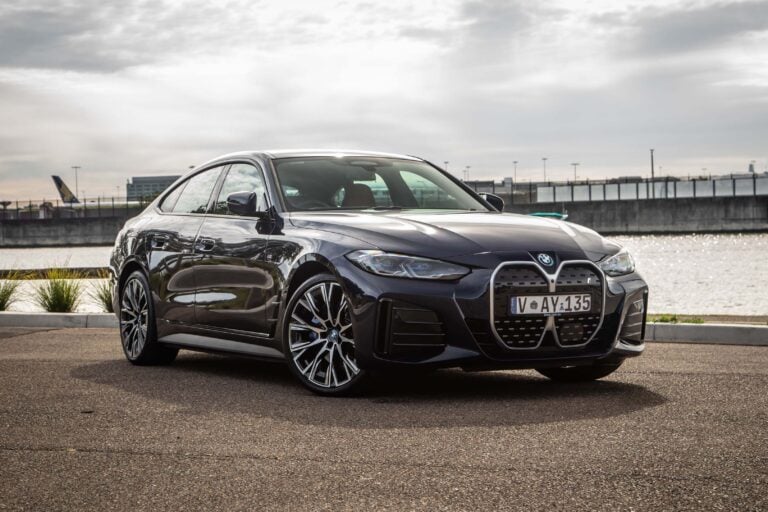 Reviews
Reviews2022 BMW i4 40 eDrive review
BMW’s i4 40 trades super-fast dual motor performance for still quite fast single motor speed for a bit more range and better value.
-
 Reviews
Reviews2024 Polestar 2 review: The RWD sedan it should’ve always been
More than a mild mid-life update, this is what the Polestar 2 should’ve been from the start


